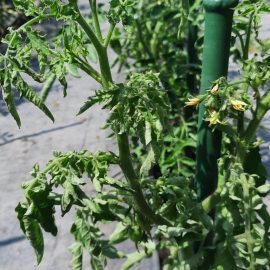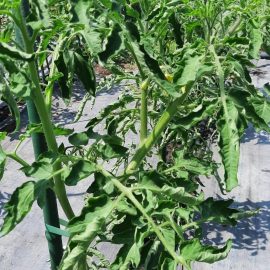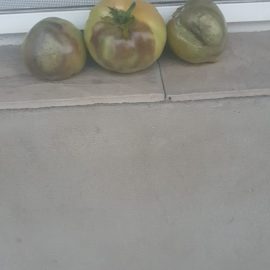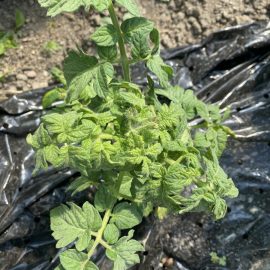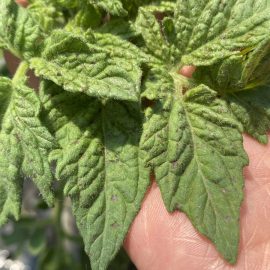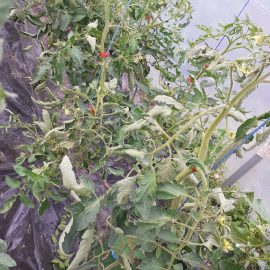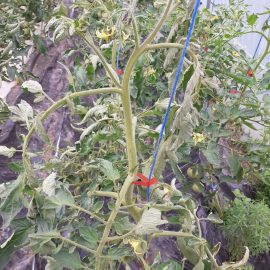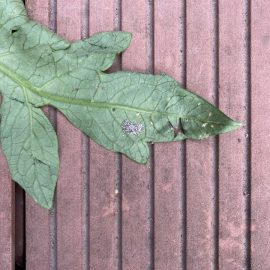Tomato late blight (Phytophthora infestans) – identify and control
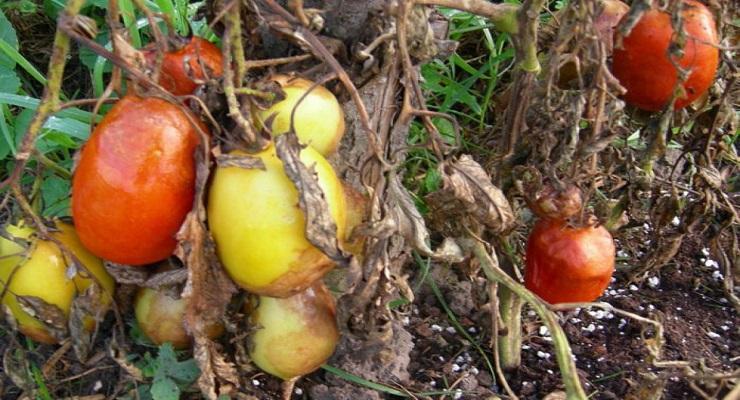
Tomato late blight, Phytophthora infestans was reported in Europe in 1847. It appears on tomatoes, especially in the second cycle of culture. In greenhouses and polytunnels, the crop damages can vary from 30% to the entire compromise of the crop.
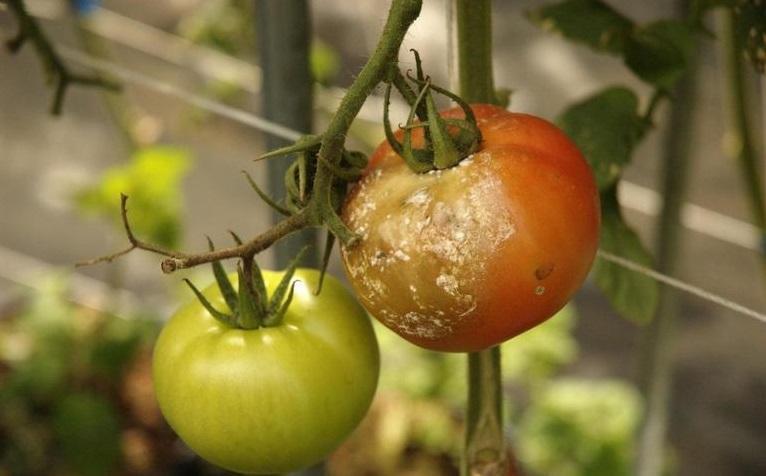
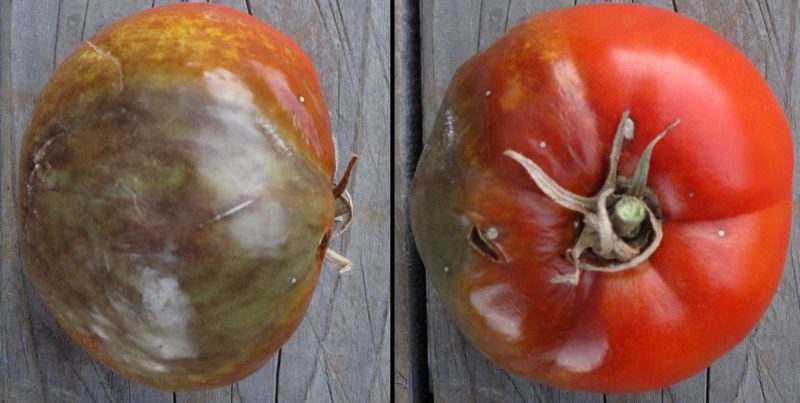

Symptoms. Tomatoes can be infected in all growth stages, the leaves showing on the edges or towards the top spots with a damp appearance (dark green). Affected tissues wither, turn brown and the leaves curl up to the topside. In conditions of atmospheric humidity on the lower face of the leaves, near the spots appears a fuzz, not too dense, white. The peduncle of leaves, the shoots, and the attacked stems, have elongated brown spots, superficial, without whitish fuzz. The attacked inflorescences show on the leaves and at the base of the flower’s brown areas.
The significant attack is on the fruits, which can be attacked in all stages of development. The pathogen produces large brown-olive spots and quickly destroys the whole fruit. Tomatoes become hard, rough, and ripe ones have light brown spots, on the surface of which appear concentric areas. On fallen leaves where there is high humidity, the fungus forms a mycelium with many spores. In autumn crops in greenhouses (second cycle), the attack evolves rapidly, due to variations in day-night temperature, which cause condensation of water on the vegetative organs, condensation that eases infections.
Tomato late blight pathogen is Phytophthora infestans. It occurs especially in years with heavy rainfall and moderate temperatures.
Prevention and control. It is recommended to gather and destroy plant debris, seedlings to be produced from healthy seeds, avoid growing tomatoes in the vicinity of potatoes or on the same land, where potatoes were grown in previous years. Chemical treatments are applied at intervals of 6-7 days with specific fungicides.
Recommended products
-
You can find products on a different store
Change Store -
You can find products on a different store
Change Store -
You can find products on a different store
Change Store -
You can find products on a different store
Change Store -
You can find products on a different store
Change Store -
You can find products on a different store
Change Store -
You can find products on a different store
Change Store -
You can find products on a different store
Change Store -
You can find products on a different store
Change Store -
You can find products on a different store
Change Store -
You can find products on a different store
Change Store -
You can find products on a different store
Change Store -
You can find products on a different store
Change Store -
You can find products on a different store
Change Store -
You can find products on a different store
Change Store -
You can find products on a different store
Change Store -
You can find products on a different store
Change Store -
You can find products on a different store
Change Store -
You can find products on a different store
Change Store -
You can find products on a different store
Change Store -
You can find products on a different store
Change Store -
You can find products on a different store
Change Store -
You can find products on a different store
Change Store -
You can find products on a different store
Change Store














































































































































































































































































































































































































































